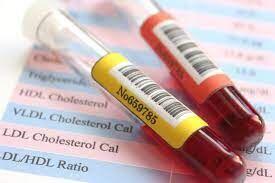Study on Eosinophil Count and Metabolic Syndrome
In a new study published in The American Journal of the Medical Sciences, it was seen that a high eosinophil count is a risk factor for metabolic syndrome (MetS) on its own. This finding might also be influenced in part by hypertriglyceridemia and hypo-HDL cholesterolemia.
Numerous clinical and epidemiological research have revealed conflicting results about the relationship between human eosinophil count and complex features and disorders. Higher levels of blood fibrinogen and platelet count, an elevation in the risk and severity of coronary atherosclerosis, an aggravation of asthma, metabolic syndrome (MetS), pulmonary hypertension, and inflammatory bowel illnesses have all been linked to higher eosinophil counts. Systemic inflammation is linked to eosinophil count, cholesterol, and metabolic syndrome. As a result, Wei-Yu Lin and colleagues undertook this large population-based study to look at the relationship between high serum lipids, eosinophil count, and MetS in Taiwanese people.
A cross-sectional study of 10,354 persons who had health checks at Taiwan's Shin Kong Wu Ho-Su Memorial Hospital between January 2006 and December 2016 was carried out. MetS was developed using parameters tailored particularly for the Chinese population by the International Diabetes Federation. High-density lipoprotein cholesterol (HDL-C), apolipoprotein A-I (ApoA-I), low-density lipoprotein cholesterol (LDL-C), and apolipoprotein B (ApoB) were all measured in the serum. The correlation coefficient and linear regression were used to examine the relationship between eosinophil count and waist circumference, blood pressure, fasting hyperglycemia, and serum lipids. The chances ratio of MetS and abnormal blood lipid levels in each eosinophil count quartile was determined using multivariate logistic regression analysis.
Key Findings
- Eosinophil count was shown to be favorably linked with triglyceride levels and adversely associated with HDL-C levels, but not with ApoA-I and ApoB.
- MetS risk rose considerably across eosinophil count quartiles.
- MetS adjusted odds ratios for the 2nd, 3rd, and 4th quartiles were 1.28, 1.38, and 1.42, with reference to the first quartile, respectively.
The authors concluded that high eosinophil count is an independent risk factor for MetS. Hypertriglyceridemia and hypo-HDL-cholesterolemia might partly contribute to this result.
Keywords
Reference:
Lin, W. Y., & Chen, J. D. (2022). The association between eosinophil count, serum lipids and metabolic syndrome in Taiwanese. The American Journal of the Medical Sciences. https://doi.org/10.1016/j.amjms.2022.07.015



0 Comments
Post a comment
No comments yet. Be the first to comment!